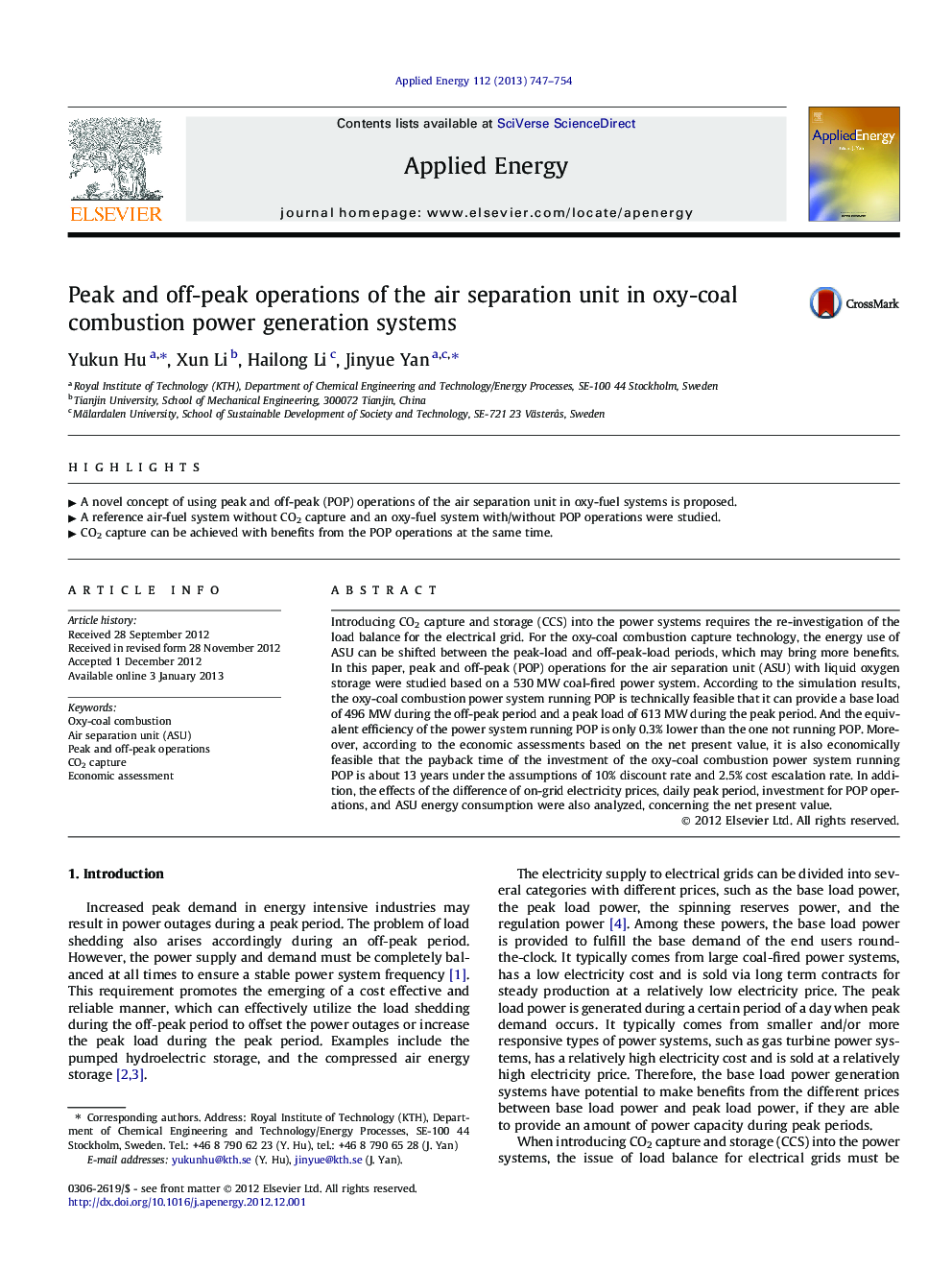| Article ID | Journal | Published Year | Pages | File Type |
|---|---|---|---|---|
| 242954 | Applied Energy | 2013 | 8 Pages |
Introducing CO2 capture and storage (CCS) into the power systems requires the re-investigation of the load balance for the electrical grid. For the oxy-coal combustion capture technology, the energy use of ASU can be shifted between the peak-load and off-peak-load periods, which may bring more benefits. In this paper, peak and off-peak (POP) operations for the air separation unit (ASU) with liquid oxygen storage were studied based on a 530 MW coal-fired power system. According to the simulation results, the oxy-coal combustion power system running POP is technically feasible that it can provide a base load of 496 MW during the off-peak period and a peak load of 613 MW during the peak period. And the equivalent efficiency of the power system running POP is only 0.3% lower than the one not running POP. Moreover, according to the economic assessments based on the net present value, it is also economically feasible that the payback time of the investment of the oxy-coal combustion power system running POP is about 13 years under the assumptions of 10% discount rate and 2.5% cost escalation rate. In addition, the effects of the difference of on-grid electricity prices, daily peak period, investment for POP operations, and ASU energy consumption were also analyzed, concerning the net present value.
► A novel concept of using peak and off-peak (POP) operations of the air separation unit in oxy-fuel systems is proposed. ► A reference air-fuel system without CO2 capture and an oxy-fuel system with/without POP operations were studied. ► CO2 capture can be achieved with benefits from the POP operations at the same time.
